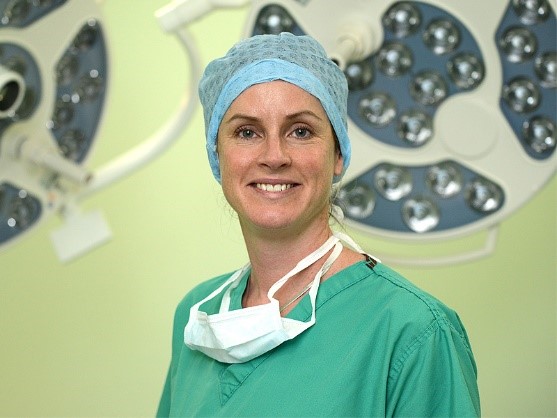Man’s Best Friend Lends A Paw For Research – An interview with veterinarian and researcher Dr Kelly Blacklock

Rare diseases are defined by the European Union as a disease or condition that effects fewer than 1 in 2000 people within the general population. Despite their individual rarity the sheer number of rare diseases results in a much higher figure as 1 in 17 people in the UK will suffer from a rare disease within their lifetime. More troubling is how few effective treatments we have available for patients living with a rare disease. Improvements however have been made and research all over the world is moving to improve the lives of these patients. But how do you research these diseases when their rarity often precludes scientists from large amounts of patient data and samples?
Animal models have increased in their complexity drastically over the last few decades and are powerful tools for recapitulating rare diseases without the need to use precious and rare patient samples. Whilst great strides have been made in computational biology and in vitro modelling the backbone of a vast amount of both basic and translational research requires the use of animals. In this blog I want to look at how one researcher at the IGC utilises novel animal models to understand rare disease, design improved therapeutics and ultimately aim to improve the lives of patients.
Dr Kelly Blacklock is a researcher and veterinary surgeon at the University of Edinburgh and works within Professor Elizabeth Patton’s lab at the IGC. Kelly works on oral melanoma a rare disease which progresses rapidly and proves to be particularly aggressive. Unfortunately, it is often diagnosed late resulting in oral melanoma having one of the lowest percentages of 5-year survival rates within melanoma.
Unlike most animal research within the UK, of which a staggering 58% utilises mouse models, Kelly’s research focuses on dogs, which make up only 0.27% of experimental work here in the UK. She is in a unique position through her veterinary work to utilise dogs to further our understanding of oral melanoma. I wanted to interview Kelly to find out more about her exciting research, why she studies dogs and learn more about life as a vet and researcher.
What initially led you to researching canine oral melanoma?
I am a veterinary surgeon at the University of Edinburgh’s Royal (Dick) School of Veterinary Studies. We have one of the largest oncology departments in Europe, with patients travelling from all over the UK to receive surgery, chemotherapy, or radiation therapy for their cancers. Canine oral melanoma is the most common oral tumours in dogs, and so I see a lot of patients with this condition. Treatment usually involves surgical resection of the tumour, which is a big and challenging surgery, and consenting to facial surgery and reconstruction is an emotional journey for our patients’ caregivers. I’m frustrated that most patients will die of metastatic disease, regardless of what treatment we provide. Nothing works. So I wanted to explore this disease in the hope that we can define other, more successful treatment options. If I never again have to operate on another patient with oral melanoma in my life, I’d be very happy.
Why do you use dogs as a model of oral melanoma?
Dogs have been our best friends for nearly 30,000 years. They’re always by our sides, sharing our environments, eating the same foods. We have more in common than we think! As a vet, I see the ways in which cancers behave in our pets, and the clinical similarities and differences between the species are obvious to our profession. I’m convinced that many of the animal models we’re looking for have been sitting beside us all along.
How does your research contribute to our understanding of human oral melanoma?
We’ve been looking at trying to understand mucosal melanoma more deeply and the dog has really helped with that. Because we have large number of canine samples, we can look for patterns in the dog relatively easily. Once we’ve identified an area of interest, we can look directly at the rarer human tissue to compare and contrast between the species. We couldn’t have achieved what we have without the help of the Bioinformatics Core, who’ve been invested in this work from the very beginning.
What are the main challenges you face studying rare disease?
Achieving funding for research into uncommon diseases is very challenging. If you’re successful in achieving funding, then you struggle to obtain large numbers of samples. If your research is going to work, you need to do a lot of talking to develop large networks of interested people. It takes a lot of time to get people to feel invested in your project- bringing cakes and coffee to meetings certainly helps!
What is it like balancing using dogs as a model system for research within a veterinary setting?
Our dogs are clinical patients, exactly like human patients in a hospital. Therefore, they have to be treated in the same way as we would treat a human patient: my patient’s caregivers have to give consent to enrol them in a study, we have to respect data confidentiality, and the patient’s treatment cannot be altered by their inclusion in a research project. This is exactly why I love what I do- research designed in this way is incredibly raw and messy, but enormously clinically relevant. This is exactly what makes the dog a beautiful model for research- we can learn so much from them.
Do you use any other models within your research and if so what novel insight or benefits do these models have in combination with your animal work?
We’re trying to develop in vitro patient-derived models of canine oral melanoma, which we will then be able to use for drug screening. This is very exciting, and we hope that we’ll be able to develop a pipeline which can then be directly applied in human mucosal melanoma.



